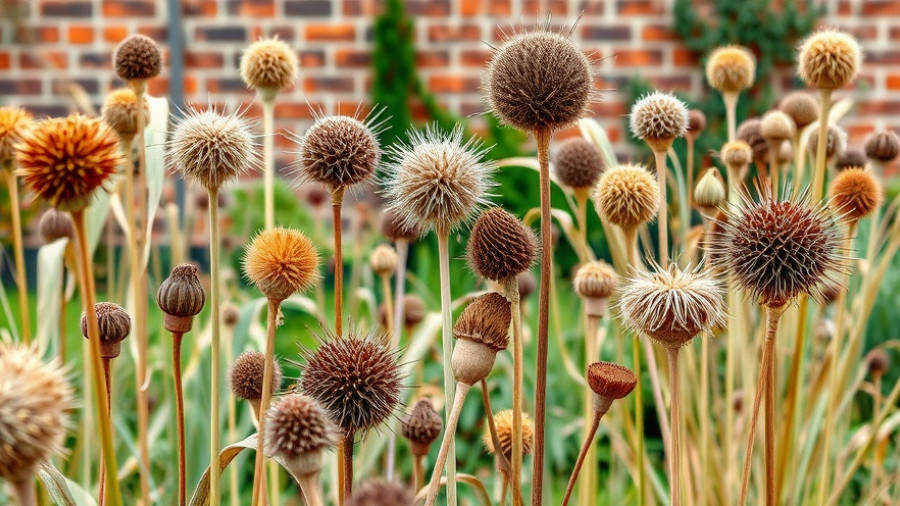
The Untapped Beauty of Seedheads in Winter Gardens
Many homeowners underestimate the aesthetics and ecological benefits of leaving seedheads intact in their gardens. These often-overlooked remnants transform landscapes into sculptures as winter approaches, supporting local wildlife while minimizing maintenance. As the vibrant colors of summer fade, the graceful outlines of seedheads offer a stunning contrast against the desolate backdrop of winter, creating an unexpected allure.
Why You Should Embrace Winter Seedheads
Professional gardeners increasingly advocate for leaving seedheads in place until spring. This practice yields numerous advantages:
- Supporting Wildlife: Seedheads provide essential food sources for birds, such as goldfinches and sparrows, during the harsh winter months. Many species, including insects, find refuge within the hollow stems, increasing biodiversity in your garden.
- Soil Protection: The decaying plant matter acts as insulation for roots, preventing frost damage, while enriching the soil as it breaks down. This natural composting process greatly enhances the nutrient profile of your garden.
- Less Work: Allowing seedheads to remain reduces the amount of spring cleanup required, as much of the material will have decomposed naturally.
- Winter Aesthetics: The sculptural form of seedheads glistens in frost and mist, offering visual interest when other plants have gone dormant.
Choosing the Right Plants for Seedheads
So, which plants offer the best seedheads for your garden? Here are a few standout selections that are not only visually striking but also provide significant wildlife benefits:
- Teasel (Dipsacus fullonum): Known for its tall, spiky seedheads that become favorite feeding spots for various birds.
- Echinacea (Echinacea purpurea): With its familiar blossoms, echinacea is a staple for both human enjoyment and avian nutrition.
- Ornamental Grasses: Varieties like Miscanthus and Panicum not only survive winter beautifully but add a soft texture to your garden.
Understanding Invasive vs. Non-Native Plants
While many seedheads are benign, some plants can become invasive. It’s crucial to remain vigilant about which species thrive in your area. For instance, while English ivy offers food and shelter in some places, it can be destructive in others. Researching local guidelines from reliable sources helps create a balanced ecosystem in your garden and prevents harmful spread.
How to Incorporate Seedheads Intelligently
Incorporating seedheads into your landscape doesn't have to mean a messy garden. Here are a few strategies for achieving a balance:
- Strategic Placement: Group plants with prominent seedheads in areas visible from windows or outdoor seating.
- Seasonal Rotation: Consider trimming some plants that produce visually appealing seedheads earlier, while allowing others to flourish into winter.
- Wildflower Mixing: Introduce native wildflowers with substantial seed production into your landscape to bolster both aesthetics and biodiversity.
Conclusion: A Call to Go Wild
By choosing to leave seedheads standing throughout winter, homeowners can unlock a new level of beauty in their gardens while fostering a thriving ecosystem. Embrace this sustainable and visually impactful gardening technique. Take action now to support wildlife in your garden—next winter, your backyard could be a sanctuary bursting with life!
 Add Row
Add Row  Add
Add 




Write A Comment